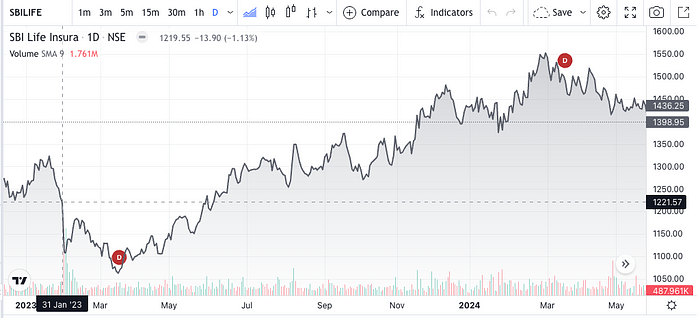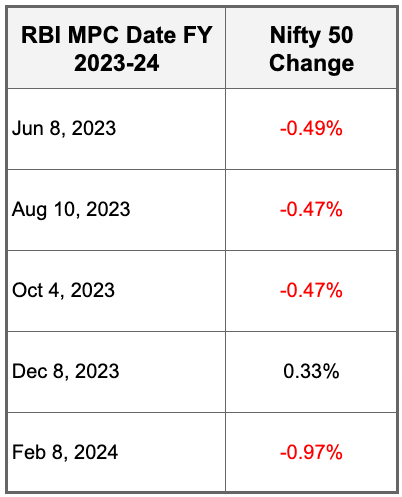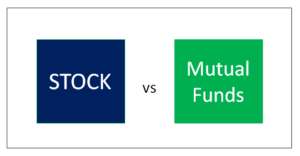What is the fuss?
Money is made in the stock investing by buying low and selling high.
But what if I told you there are certain events throughout the year when the stock market decisively offers discounts?
The stock market dips during these events, producing a great buying opportunity. If you knew these events, you could save up cash to deploy during these events.
Or, the stock market decisively rises during these events, rewarding those who invested before the rise. If you knew these events, you could invest before these events occur and reap rewards when the event occurs.
These events exist. They are a mix of festivals, seasons, and man-made created recurring events. They occur every year like clockwork, giving us investors opportunities to open up our wallets and get that idle money working.
Excited? So was I when I noted and recorded the recurrence of these events year after year.
Let’s get started and reveal these events one at a time.
Note: As always, there are no certainties in the stock market. What worked 10 years in a row might not work the 11th year. Any macroeconomic situation (war, famine, pandemic, volatile political stability, etc. can have an untoward impact on the stock market).
Event 1: Budget Week (First week of Feb)
Budget Day is an action-packed day for the Indian Stock market. The Indian government is the largest capex machine in India. It has the power to create policies that can attract more capital, make it easier to do business, and provide incentives to certain industry sectors.
Companies and investors alike highly anticipate the budget, which can be volatile. However, retail investors like us can use this volatility to our advantage.
Pre-Budget News based volatility
Before every budget, news agencies publish what is expected from the year’s budget. These expectations are based on hints given by government bodies in preceding months, surveys of investment analysts and corporate leaders, and overall market sentiment.
This expectation may or may not be true in the current year’s budget, but we are here to use the volatility caused by pre-budget jitters.
How do we do this?
By understanding that these jitters are short-lived and don’t change the investment rationale of long-term investors like us.

Example: If the government is expected to increase taxes on tobacco products, tobacco companies’ stock prices might start falling before the budget. As we saw in 2022 and 2023, the stock price of ITC (Indian Tobacco Company) dipped a couple of days before the budget announcement. However, no tax increase was announced, after which ITC stock bounced back.
Even if tobacco taxes were increased, ITC is a well-run company with deep-rooted moats. It will be able to pass on the tax increase to its customers by increasing the price of its cigarettes. Or it will find other ways to efficiently capture the tax increase and still grow year on year. That is what well-run, long-standing companies do. They take any regulatory or policy hurdle in their stride and emerge stronger.
Sure, there will be short volatility for a couple of quarters. But small dips do not matter for long-term investors. Hence, these dips might be a good buying opportunity for them.
Usually, before the budget, the market consolidates or dips, awaiting the budget announcements for the big buying to happen. Hence, a week before the budget is a good buying event, where stock discounts might be on the table.
Post-Budget Volatility
If an unfavourable announcement is made in the budget, the stock market may take time to digest and understand it fully. In this short time, post-budget, the stocks impacted by the negative announcements will show volatility, often dipping in price in the short term.
A short-term dip in moated businesses whose long-term growth story is intact is a great buying opportunity.
Example: In the 2023 budget, the government withdrew tax exemptions for insurance policies with high premiums (annual premium > INR 500k). Read the entire news story here.
Immediately the next day, top-listed insurance companies crashed. SBI Life Insurance cracked 9%, and HDFC Life Insurance cracked 11% on the same day (news link).
The stock market digested the news and slowly understood that the overall impact on the insurance business is minuscule. The impact is around 10% of topline for HDFC Life Insurance and just 1% for SBI Life Insurance (news link).
One year forward, SBI Life Insurance price has increased 25%, from INR 1,109 to INR 1,386 (refer image below).

Investment 101 helps. It helps to know that well-managed companies, trusted by their shareholders and customers, can weather storms as they come and emerge as still standing tall and growing.
Even if the impact of budget news were high, the life insurance companies would have diversified their revenue mix to minimise the impact in the mid to long-term.
The key here is to know that you are investing for the long term (>3 years). For a long-term investor, short-term volatility is a great buying opportunity.
Onto the next event.
Event 2: Financial Quarter end (March)
Often called the “March Effect,” March is the month when Indian Stock markets are volatile and usually yield negative returns.
Stats from the past twenty three years show March has given negative returns 56% of these years.
There are many reasons for this volatility in March, all of which are related to the end of the financial year in March.
First, tax loss harvesting. Investors like to pay less taxes. And tax loss harvesting helps here. As per the Tax Loss harvesting rule, an investor can net off gains from equity investments against the losses in the same financial year.
So if you made INR 100/- gains in a year and INR 100/- loss in a year, you won’t pay tax. Your gains are netted off against the loss you made.
But what if you only made INR 100/- loss in the year? Then, you can sell some of your well-performing stock that has gained INR 100/- to take advantage of tax loss harvesting.
And immediately afterwards, when the new financial year starts, you reinvest into the stock whose gains you harvested. In this way, you remain invested in your favourite stocks and save some taxes.

Similarly, companies improve their cash positions at the end of the year by liquidating their equity investments to show more cash on their balance sheets, which adds to the equity selling pressure.
Lastly, large investment institutions rebalance portfolios at the end of the financial year, causing large fund outflows in the stock market.
A combination of the above causes stock market volatility in March, causing the stock market to dip and provide mouth-watering buying opportunities.
Typically, volatility is highest during the last week of March, just one week before the end of the financial year. We all tend to start acting closer to deadlines.
A more deep reading to understand the “March Effect” is here.
The points to note are volatility and negative returns. Volatility can last a couple of days or be intraday. Keep your GTT buy orders ready (preplanned buy orders for a stock that only trigger when the price you set is reached).
Event 3: Sell in May and Go Away
Historically, May has been boring in the stock market, and gains are made in the winter months. Even though this concept originated in the US, it somewhat impacts the Indian Stock Market as well.
How do you ask?
Because of the impact of Foreign Institutional Investors’(FII) holding in the Indian Equity.
As of July 2024, FIIs hold 18% of the Indian Stock Market. This is a large chunk of the listed Indian Equities.
What if FIIs sell and invest elsewhere, following the Sell in May adage? These massive sales will impact the Indian stock market.

This is the impact on Indian equity due to the “Sell in May and Go Away” event.
However, remember that this event has a 50:50 chance of giving you a discount in May. Keep your dry gunpowder (cash) ready in May to make the most of any FII selling, leading to a temporary discount on stocks you want to accumulate.
Event 4: Summer Stocks, catering to the Heat Wave
Summers in India are hot. And it’s getting hotter every year.
What do people do to survive the heat? They buy cooling appliances (Coolers, Air Conditioners, Refrigerators, etc.) and consume cold drinks (Coke, Pepsi, Aam Pana, Buttermilk, etc.).
Using cooling appliances increases power consumption. Hence, energy companies and power transmission stocks benefit as well.
People often escape the heat to cooler hill stations and resorts, causing a travel surge that benefits hotels, luggage companies, and travel tech-listed stocks.

There you have it. Summer preferred stocks, those that do well during summers, can be bought one quarter before in January to March or early summer in April. They are expected to perform well during Apr to June quarter, with increased sales. Summer preferred industry sectors and sample stocks are:
Cooling Appliances: Bluestar, Voltas, Havells etc.
FMCG (Cold Drinks): Varun Beverages, Tata Consumer Products, Nestle, Hindustan Unilever, etc.
Power Companies: Tata Power, Adani Green, SJVN, Power Grid Corporation of India, etc.
Travel-related companies include Safari Industries (travel bags), Indian Hotels (Tata Group hotel company), TBO Tek, Rategain Travel Technologies, etc.
Event 5: Monsoon Stocks
The Indian rural population relies heavily on monsoons. Normal monsoons augur well for a healthy harvest and increase the rural population’s discretionary spending.
The rural population constitutes 64% of India’s entire population. Hence, when this size population decides to spend and splurge, the stock market bull wakes up high on caffeine.
If the monsoons are normal, the harvest will be average or good. Farmers will spend money on agrochemicals, fertilisers, and tractors to prepare for the next harvest season.
With a good harvest, rural India also spends on two-wheelers, the preferred and popular mode of travel. The consumption of fast-moving goods might also accelerate in rural India.

Below are industry sectors and some listed stocks that benefit from the monsoon and can be bought from April to May or early monsoon months in June/July to reap the rewards in the June to September quarter.
AgroChemical/Fertiliser Space: Coromandel International, Sumitomo Chemicals, etc.
Tractors: Mahindra & Mahindra
Two Wheelers: Hero MotoCorp, TVS, etc.
IMD (Indian Meteorology Department) usually forecasts the monsoon between April and May, stating whether it will be above normal, normal, or below normal.
The IMD forecast has a low hit rate when actual monsoons arrive. However, this forecast can be used to prepare for and invest in moated companies in the above industry sectors.
Some sectors do not do well during the monsoon season. The longer the monsoon season lasts, the greater the negative impact on these sectors. These sectors are construction and ancillary sectors such as cement.
Reason? It is challenging to construct and move heavy machines during downpours. So, the construction pace and investment in buying related products (cement, paints, etc.) take a backseat during monsoon season.
But after monsoons, construction activity picks up, and the revenue rises.
Monsoon months (June to September) can be used to accumulate good stocks in sectors that face headwinds during monsoons and reap rewards during the post-monsoon bounce back.
Construction: HG Infra, KNR Constructions, etc.
Cement: Ambuja Cements, Dalmia Bharat Ltd, etc.
You can check the quarterly reports of the above companies, which consistently show a 5–10% drop in the quarter-on-quarter revenue in the September quarter vs the June quarter. This is followed by a bounce back in the December quarter.
Event 6: Diwali, The celebration season
Diwali is akin to a national festival in India.
At this time of year, everyone is in a festive mood. People and companies do not hesitate to spend money to celebrate, give gifts, or take a break.
Top eCommerce companies, such as Amazon and Flipkart, hold their biggest sales events of the year during Diwali.
Diwali attracts Muhurat trading, one of its kind in the entire world. Keeping with traditions, Muhurat trading acknowledges the auspicious occasion of Dhanteras and Lakshmi Puja, when the Goddess of Wealth, Maa Lakshmi, is rumoured to enter houses well-lit and adorned.
The Jewellery segment does well, as people often buy new jewellery at this time. eCommerce activity spikes, benefiting the logistics sector and packaging-related companies.
New clothes and shoes are sold off as soon as they are placed on the shelf. Banking activity, deposits and lending see healthy and certain growth as families come together to invest in assets for their future.

Flats and apartments are freshly painted, keeping up with traditions. Paint and home decor companies see their revenue chest getting heavier this festive season.
Summarising some of these sectors and example companies. These can be bought a quarter before Diwali to reap rewards during the revenue spike caused by Diwali. Diwali usually falls in October/November; hence, buying these stocks in August/September makes sense.
Jewellery: Titan, Senco Gold, etc.
Logistics: Delhivery, Container Corporation of India, etc.
Packaging: UFlex, TCPL, etc.
Apparel: Trent, Metro Brand, Vedant Fashion, etc.
Paints: Asian Paints, Sirca Paints, etc.
Banks: HDFC Bank, SBI Bank, ICICI Bank, Kotak Mahindra Bank, etc.
Event 7: Winter Stocks
In India, winter affects different parts of the country differently. While it gets freezing in the north, landlocked states such as Haryana, Punjab, and Uttar Pradesh, it is cool and pleasant in the southern sea-facing states such as Maharashtra, Kerala, Tamil Nadu, and Karnataka.
Winter is the month of cold, flu, and other respiratory diseases. Studies indicate that our immune systems become weaker in winter, leaving us prone to infections and diseases. Pharma companies benefit by selling more medicines in the winter.
Winter is also the time of annual holidays around Christmas and New Year. Long vacations, beach resorts and Airbnbs selling at 3x their average rates are the norm. Travel companies benefit from their busiest months of the year.

What do you do to beat the chill? Some whisky on ice, vodka shots, or sipping your favourite cocktail might come to mind. Yes, you guessed it, alcohol stocks do better in winter. With high consumption, their revenue increases in the winter quarter.
These three sectors see their revenues rise 10–15% in the October to December quarter, compared to the earlier June to September quarter. Hence, to reap the benefits of the winter months’ revenue increase, you can consider investing at the end of the previous quarter, sometime in September or early October.
Industry sectors that benefit during winter and some sample stocks in the listed space are below.
Pharmaceutical: Dr Reddys, Sun Pharmaceuticals, Aurobindo Pharmaceuticals, etc.
Travel Sector: Indian Hotels, Safari Industries, Rategain Travel Technologies, TBO Tech, etc.
Alcohol Sector: Radico Khaitan, Sula Vineyards, Globus Spirits, etc.
Event 8: Flush Season
Flush season is a term used in the dairy industry to describe the months when milk production increases naturally in animals. This season typically lasts from October to March, when animals produce more milk due to better water, fodder availability, lower temperatures, and humidity. During this time, milk production can increase by 25–30%.
However, extended and excessive rains can disrupt the flush season, and a disease breakout can reverse its positive impact.

Revenue of dairy companies shoots up by as much as 20–25% during the flush season quarter (typically Jan to March quarter).
Observing monsoon reports in October and November is an easy way to spot the impact. If the monsoon season is normal and ends in October, the flush season is expected to be normal.
However, if the monsoons are heavy and extend well into November, the flush season’s impact can be mediocre to negligible.
Some sample dairy companies that benefit from the flush season and can be bought in November/December months to benefit from their disproportionate revenue increase in Jan to March quarter are:
Dairy Companies: Dodla Dairy, Hatsun Agro Products, Parag Milk Foods, etc.
Akshaykalpa, an organic dairy product company dominant in South India, is an example of an unlisted stock traded in the unlisted pre-IPO market (link for its stock is here).
Event 9: Ex-Dividend Date
Companies distribute a portion of their profits among their shareholders as dividends. The dividend is higher if companies do not have avenues for utilising this cash for acquisitions, R&D, etc.
Listed trusts, namely REITs (Real Estate Investment Trusts), and InVITs (Infrastructure Investment Trusts), are mandated by regulation to distribute at least 90% of profits generated to its shareholders.
Every time a dividend is declared, there is an ex-dividend date. This is the first date after the dividend is recorded. One day before the ex-dividend date, the company records all shareholders and the number of shares they hold. The dividend is then distributed according to this record and proportionate to each shareholder’s shares.
Why is the ex-dividend date important for us here? Many investors buy stocks to benefit from dividends in the short term and then immediately exit the stock.
The stock price of dividend-paying stocks usually dips on the ex-dividend date, as investors who enter to get the dividend will exit.
Thus, the stock price dips on the ex-dividend date, giving long-term investors a buying opportunity.
The stock price graph below of HCL Tech, an IT large-cap company, shows this phenomenon. The red circle with D written in it is the dividend date. Note that every time the ex-dividend date occurs, the stock price falls 2-3% the very same day.

(Read this article to further understand the ex-dividend date phenomenon in the stock market.)
Many financial news media actively cover the ex-dividend of key stocks, making it easier for investors to track and use these dates according to their goals, whether short-term dividends or long-term accumulation.

The ex-dividend date almost always gives a discount. The value of the discount may vary from as low as 1% to as high as 5%. This event clearly shows the difference in stock market participants: those with a short-term gains mindset vs. those with a long-term investment mindset. Hopefully, you are the latter, and you can use this event to build further positions in a stock of your choice.
Event 10: F&O Expiry — Last Thursday of the month
Derivatives contracts include Futures and Options (F&O). These are contracts to buy or sell a stock at a future date at a pre-decided price. While options do not mandate the option holder to fulfill the contract, the futures contract needs to be fulfilled before expiry.
What is expiry? Expiry is simply the date when all Futures and Options contracts expire. To avoid ambiguity or confusion among traders, the Indian stock exchange has a fixed standard expiry date for the F&O market: the last Thursday of every month.
F&O expiry is an action-packed day in the month for traders. Because it requires settling. If you are forfeiting your options contract, you lose the premium paid to buy the option contract. If you are a future contract holder, you will have to buy the number of shares of a stock you placed the future contract for or buy another future contract to sell those shares, thus cancelling both contracts.

What matters to us is that the last Thursday of the month is a highly volatile day for the stock market. And volatility brings about discounts.
The F&O expiry can turn the stock market either bullish or bearish. But one thing is certain: it will not be boring on this day.
If the stock market turns bullish, you don’t buy. But if the stock market turns bearish on the last Thursday of the month, you can pick up your preferred stocks at a decent discount.
So, there it goes. Ten events of the calendar where the stock market gives you ample and huge opportunities
Bonus Events for Long-term Investors
Sharing two more events in the calendar that can allow investors to buy at a discount.
The stock market does not like uncertainty. If there is a major event that will determine the future course of a country, lending rates, or a ceasefire between two neighbouring countries at war, the stock market will be boring or negative in the days leading to this main event. Some examples of such events are:
General Elections
As India entered its 2024 election, the stock market gave negative returns for four straight days (May 24 to May 30), leading to the final day of the election, when the exit polls survey was supposed to be announced.

RBI MPC Meeting Dates
Reserve Bank of India, the central bank in India, meets quarterly to decide on repo rates based on its inflation targets. These are called Monetary Policy Committee meetings. The market is volatile during the days of the RBI’s MPC meeting dates as it awaits the outcome of the meeting.
Repo rates greatly impact corporate capex plans; hence, the stock market watches the statements as they are released to the public. Typically, the RBI MPC meeting dates see huge volatility, with markets usually dipping 0.5% to 1% on these dates until the final meeting announcements are made. Refer to the image below, where four out of five MPC meeting dates saw the Nifty 50 index dip in the last year.

There can be many such events that impact the stock market. If you study the market and industry sectors closely, you can build a list that works for you.
For example, Indian IT companies usually post stellar results in the October to December quarter (FY Q3). They post the largest revenue bump for the year and the highest order book growth in this quarter.
Reason? This is the last financial quarter in the US and European countries, which contribute to the majority of Indian IT companies’ earnings. This leads to decisive deal closures and payouts for the IT projects carried out during the year.
Hence, if you are an investor in IT companies, you might want to invest in early Q3 (October/November) to reap stock price movement once these companies release their Q3 results in Jan/Feb.
Parting Thoughts
Throughout the year, the stock market offers ample opportunities for patient, long-term investors to buy stocks at a deep discount and make good future returns.
Some of these events are man-made, such as budget announcement dates and monthly F&O expiry dates. Some are nature-driven, such as festivals and seasonal variations in product or service sales.
Once you understand which events benefit you and start tracking them, buying into the stock market gets easier.
Even though no one can predict the future, these events help you prepare for a likely future that can offer discounts or reward you disproportionately.
As always, the first step is picking well-run, moated businesses to invest in. Once you have a buy list, you can take advantage of these events the stock market offers and build your desired portfolio.
Which is your favourite event of the year to trade in the stock market? Do share in the comments below.
Disclaimer: This post is based on my experience and is not investment advice. Please do your own research before investing.




